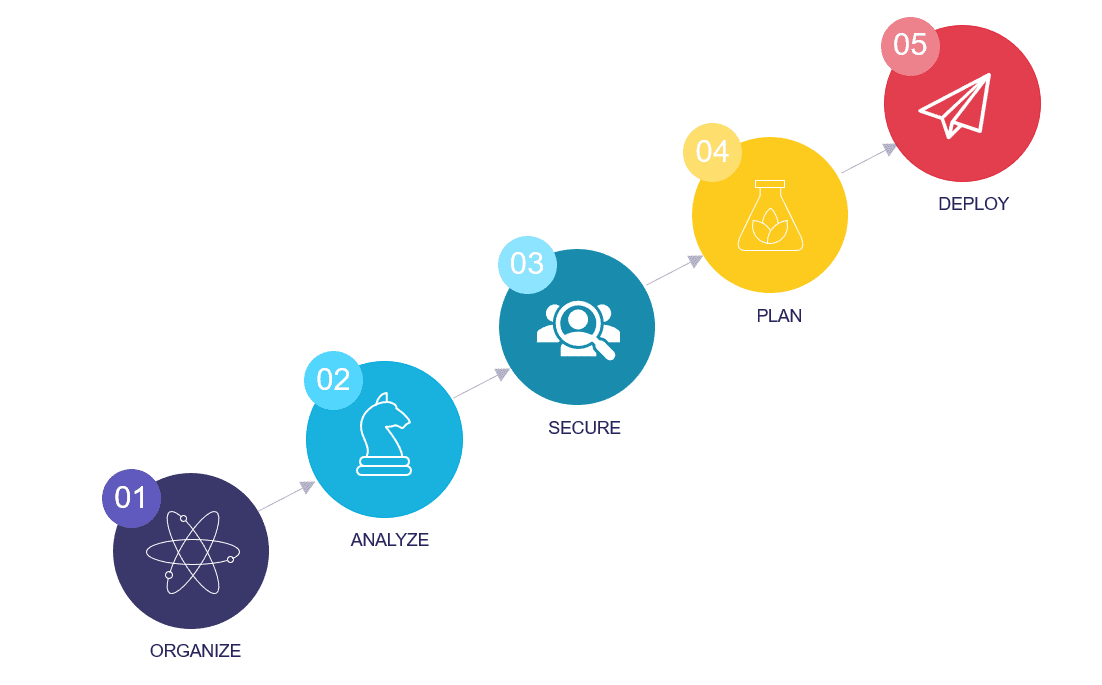Program recovery initiatives get troubled programs or products back on track by addressing their underlying issues. These may include (but are not limited to) mistakes made during program definition and setup, missed delivery dates, deviations to business requirements, testing failures, and (during and after production) recalls, software patches, and bug fixes.
Sometimes, these issues are entirely within your team’s control, like in the case of poor program setup. However, trouble may be completely outside your control, as in the case of the recent COVID-19 outbreak. In order to stay in the game and deliver what your business needs, you must enact a program recovery plan and its task force as quickly and as smoothly as possible.
Our goal with this article is to provide some key tips in making your task force implementation all the more successful.

If you pay attention to politics, you’re probably aware of the term “task force.” A task force, also known as a crisis management or problem resolution team, is a temporary team created to solve a particular problem. It is usually formed with subject matter experts, each with their own defined role, in order to maximize the efficiency and efficacy of the intended resolution.
As program recovery initiatives are temporary, they are typically structured around a three phase approach. Theses three phases are Set Up, Manage, and Transition, where you resume business as usual after successful recovery actions have been implemented.

This is where MIGSO-PCUBED comes in. We help you to set up and manage the temporary organization and resources required to achieve recovery. We can either merely assist with the recovery, or we can lead the recovery of the program. Our consultants have both the relevant experience in leading resolution teams and subject matter expertise in Project and Program Management to help you to achieve rapid recovery results.
You can use any problem-solving process, as they are relatively the same. The key deciding point is which process can be readily deployed within your organization. You may not choose to deploy Six Sigma unless you have the expertise in house. However, whether you use the 8D process common to manufacturing, Six Sigma, or even the 5 Why’s, the key point is to accurately define the problem, define alternative solutions to resolve, and then to make sure it doesn’t happen again.
We have listed out eight essential steps to problem resolution below, specifically used in situations with non conforming components. However, you can use it for any crisis or incident response team.
Get your problem resolution or crisis management team together with the immediate focus on protecting your employees and customers from contamination.
Analyse the situation to ensure no further contamination.
Make sure your employees and contractors are safe. Ensure evacuation, first aid, and emergency management procedures are in place and understood. Establish clear working instructions and secure sensitive company or client information from exposure – even if it means cutting communication with servers.
Implement interim corrective action(s) where possible so that you can keep delivering value where you can.
Apply a systematic approach to find the root cause of the contamination.
Make sure that your recovery efforts will work for your scenario.
Find additional action(s) to avoid the recurrence of the concern.
Deploy preventive action(s) across-the-board for products, projects, organisations, systems, etc.
By using the word “contamination” above, it’s easy to see how this relates to our current situation with the pandemic. Across the globe, our Project Managers are supporting our clients during the COVID-19 crisis.
We sat down with Isaac Heras, senior consultant with MIGSO-PCUBED. Isaac is currently working alongside his client to manage the various work streams in response to the outbreak. He’s keeping all stakeholders informed, as well as helping to follow up on the latest actions.
The team is utilizing an approach they tested out over a year ago during an IT outage. The approach of Organize, Analyze, Secure, Plan and Deploy (highlighted from the eight step approach above) is well-suited to their current challenge.

My first step was not actually to define the problem. It was to setup and organize the problem resolution or crisis management team so that they could then begin to define the problem. This establishes the structure required to ensure that all parties are aware of what the plan of action is and steps that each can take to resolve along the way.
Key outcomes of a Program Recovery Setup phase are:
In situations like our current challenge, it is easy to jump at solutions and scenarios as time is precious. However, I would caution others to take time to organize, think through your response.
You should then validate the response with multiple stakeholders to stress test it prior to prime time roll out to all employees.
This is the same recommendation as we have for those doing all virtual PI Planning sessions right now. This is all new for all of us.
Therefore, the key aspect here is to deploy only what is necessary to get the job done. You do not need to have all the bells and whistles. People will be patient and accepting of user experience issues. All they need right now is accurate information so that they can act.
We have set up twice weekly meetings with our key stakeholders and instituted additional emails to keep all parties involved informed at my client.
Additionally, we have revised existing processes with significant lead times down to mere hours due to the fact that everybody on the task force is engaged and has clear roles and responsibilities.
While the situation is less than ideal, I am extremely proud to be part of the response team. I am energized by what the team has rapidly put in place to secure the safety and health of their employees as well as their ability to rapidly play out planning, deployment and feedback on proposed actions. I wish you all well and that you stay safe.
This article was written by Isaac Heras
Loved what you just read?
Let's stay in touch.
No spam, only great things to read in our newsletter.
We combine our expertise with a fine knowledge of the industry to deliver high-value project management services.
MIGSO-PCUBED is part of the ALTEN group.
Find us around the world
Australia – Canada – France – Germany – Italy – Mexico – Portugal – Romania – South East Asia – Spain – Switzerland – United Kingdom – United States
© 2024 MIGSO-PCUBED. All rights reserved | Legal information | Privacy Policy | Cookie Settings | Intranet
Perfect jobs also result from great environments : the team, its culture and energy.
So tell us more about you : who you are, your project, your ambitions,
and let’s find your next step together.
Dear candidates, please note that you will only be contacted via email from the following domain: migso-pcubed.com. Please remain vigilant and ensure that you interact exclusively with our official websites. The MIGSO-PCUBED Team
Choose your language

A monthly digest of our best articles on all things Project Management.
Our website is not supported on this browser
The browser you are using (Internet Explorer) cannot display our content.
Please come back on a more recent browser to have the best experience possible
